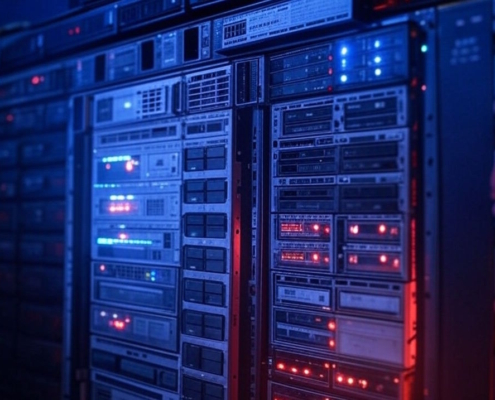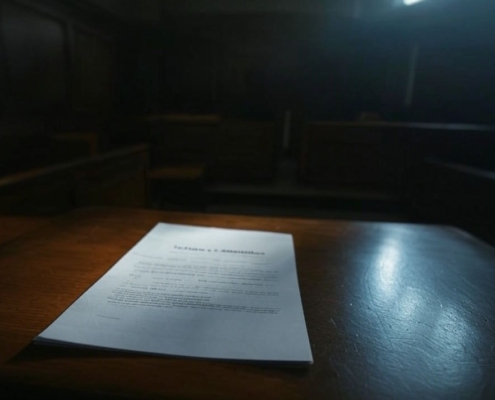What does prime interest rate mean?
Prime interest rate refers to the value that the most creditworthy clients of American commercial banks are charged for loans. The prime interest rate, like all other loan rates, comes from the overnight rate of the federal funds, which the Federal Reserve establishes at gatherings that take place eight times throughout the year. Lenders base the interest rates they charge on all types of loans, including credit cards, auto loans, mortgages, and more, on the prime interest rate.
This prime rate was last set at 8.00% in September 2024. In September 2024, the federal funds rate was fixed between 4.75 and 5 percent. The Federal Open Market Committee (FOMC) lowered the rate from 5.5% to 5.25%. This rate stayed in place for over a year.
Major points
- Commercial banks charge their best business customers an interest rate known as the prime interest rate.
- In most cases, the prime interest rate is calculated by adding three to the federal funds rate.
- Mortgages, SBA loans, personal loans, and many more types of loans all use the prime interest rate as a starting point, albeit this rate might change depending on things like demand for the loans.
- While the prime interest rate is reserved for the most responsible customers, the interest rate that everyone else pays is a combination of their credit score and a percentage.
- The Wall Street Journal publishes the prime interest rate daily, and it is the most often mentioned rate.
An Overview of the Prime Interest Rate
When a lender charges a percentage of the total amount of a loan, this is referred to as the interest rate. This is the money that the lender gets, and the exact proportion changes depending on the loan. Interest rates for secured loans, like mortgages and automobile loans, are lower than those on unsecured loans, like credit cards.
A borrower’s credit score and other financial information determine the rate that a person or company obtains. Annual percentage rates (APRs) are the standard way to describe these rates.
Rate of Federal Funds
The Federal Open Market Committee (FOMC) funds rate sets the federal funds rate, which in turn sets the prime lending rate and prime interest rates.
The overnight rate at which financial institutions and banks lend money to one another is known as the federal funds rate. The procedure is an ongoing electronic transfer of funds that guarantees all banks have enough cash on hand to run their daily operations.
The Prime Interest Rate
When deciding what interest rate to charge their most valuable clients—often huge organizations that repay loans and borrow on a generally consistent basis—banks typically utilize the calculation of federal funds rate + 3.
This prime interest rate serves as the basis for the other rates of interest, each determined by adding an extra percentage to the prime rate.
Different loan types have different interest rates determined by the bank. A borrower’s interest rate could vary according to their income, debts, and credit history.
A person’s interest rate on a credit card might range from prime plus nine percent for an exceptional scorer to prime + 15% for someone with a solid score but not stellar.
Nearly all commercial and consumer interest rates are based on the prime interest rate with an added percentage.
Figuring out the Prime Interest Rate
Credit card interest rates, small business loans, and other forms of loans are based on the prime interest rate, which is set by individual banks. While the Federal Open Market Committee (FOMC) does not have any say over prime interest rates, many banks and other financial organizations base their own prime rates in part on the FOMC’s target level for the federal funds rate.
The prime interest rate that appears in the Wall Street Journal every day is one of the most often utilized ones. When determining the prime interest rate, banks often use federal funds + 3.
Since September 19, 2024, the prime interest rate in the United States has remained at 8.00%.
The FOMC lowered the range for the federal funds rate by half a percentage point, bringing it to 4.75% from 5.00%.
In response to persistently rising inflation, the FOMC raised the federal funds rate in May 2022, and the prime interest rate followed suit.
Financial institutions in the United States do not have to adjust their prime interest rates in response to the Federal Reserve’s decisions, although they do keep tabs on the Fed’s prime interest rate increases and may use them as justification for their own rate hikes.
Consistent with other rates of interest, the prime interest rate fluctuates every day. The website of the Federal Reserve provides a glimpse of the prime interest rate.
How Does the Prime Interest Rate Affect Things?
The prime interest rate has an impact on many different types of bank loans. The cost of obtaining several types of loans, including those for small businesses, cars, credit cards, and mortgages, rises in tandem with changes in the prime interest rate.
The prime interest rate could have an impact on variable-rate debt because banks have the power to adjust your rate. This encompasses a wide range of financial products, including credit cards, mortgages, personal loans, home equity loans, and student loans with variable interest rates.
Customers with the lowest default risk are the only ones eligible for the prime interest rate. Even if the prime rate is five percent, a lender can still give consumers who qualify rates below five percent.
As of September 2024, the prime interest rate in Japan was 1.63% while in Canada it was 6.45%.
What Is the Impact of the Prime Interest Rate on Borrowers?
Various economic variables, such as shifts in inflation, the fed funds rate, and the loan demand, can cause the prime interest rate to fluctuate over time. Loan and investment interest rates that track the prime interest rate may shift in response to changes in the prime interest rate.
Your specific financial product or loan determines how the prime interest rate impacts you. The following are examples of popular approaches:
- Home equity loans: It is possible for the prime interest rate to serve as the basis for the interest rate on a borrower’s home equity loan or HELOC. Borrowers may see a rise in their monthly payments if the prime interest rate goes up, as this would cause the interest rate on their home equity loan to also rise.
- Adjustable-rate mortgages (ARMs): When the prime interest rate rises, it can cause interest rates on adjustable-rate mortgages (ARMs) to rise as well, which means that borrowers with these types of loans may see an increase in their monthly payments.
- Credit card balance: The prime interest rate could be the basis for an adjustable-rate credit card’s interest rate. An increase in the prime interest rate can mean higher interest rates for borrowers who use their credit cards for new purchases.
- Loans for small businesses: An increase in the prime interest rate would cause interest rates on small company loans that are based on that rate to rise, which means that the businesses’ loan payments would be higher.
A Prime Interest Rate Historical Overview
After the Great Depression ended in the 1930s, banks began using the prime interest rate to determine the interest rates for short-term loans given to their most responsible customers. The prime interest rate was rather consistent in the decades after WWII, staying between two and three percent.
In the midst of a recession and rising inflation in the US, the prime interest rate started to climb sharply in the ‘70s. As a measure to control inflation, the Federal Reserve raised interest rates to a historic 21.5% in December 1980, setting the prime interest rate.
The prime interest rate followed other benchmark interest rates and had considerable fluctuations throughout the subsequent decades, reflecting economic ups and downs. The prime interest rate is often higher when the economy is doing well and lower when things are going poorly economically.
What is the historical trend of the prime interest rate?
Prime interest rates change throughout time in response to changes in the federal funds rate, which are indicators of the economy’s health. Prime interest rates over the last four years have fluctuated between 3.25% and the current 8%.
If the prime rate were to change, whose loans would remain unaffected?
A shift in the prime interest rate will have no effect on any fixed-rate loans or lines of credit that are already in existence. Credit cards, savings accounts, mortgages, and student loans with set rates are all part of this category.
When the Prime Interest Rate Changes, What Does It Mean?
Any time the prime interest rate shifts significantly, it’s usually a hint that the Fed has adjusted the funds rate. In order to rein in inflation, it raises the federal funds rate. It lowers the rate to promote expansion in the economy.
The Federal Reserve’s mission is to influence consumer and business borrowing habits. A decrease in rates encourages borrowing, whereas an increase in rates discourages it.
When did the United States’ prime interest rate hit its highest point?
In December 1980, the prime interest rate in the United States reached an all-time high of 21.5%.
In Conclusion
Commercial banks use the prime interest rate—which is derived from the fed funds overnight rate set by the Federal Reserve—to charge interest to their creditworthy clients.
To get the prime interest rate, banks typically apply federal funds plus 3. Mortgage rates, small company loans, and personal loans are all based on this rate.






























